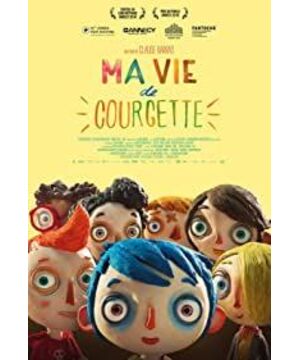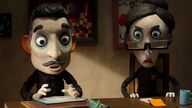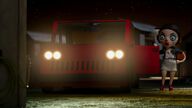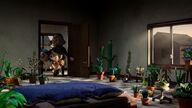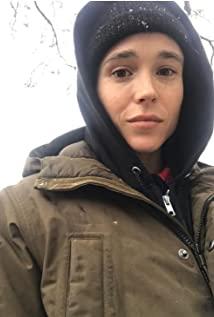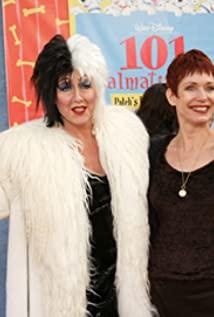The loss of childhood, the onset of puberty, and the choices that accompany growth under the sun can open up memories and glow with warm and infectious power.
In last year's Oscar selection season, Switzerland selected "Life of Zucchini" to declare the best foreign language film (nominated for the top nine) and the best animated feature film (nominated for the top five), as a stop-motion animation with such a weight to enter the fans' vision. Nature attracts curiosity and attention. Although it ultimately lost to "Zoo Crazed" at the Oscars, with the combination of pictures, technology and story, as well as the simplicity and innocence of innocence and sympathetic humor, "Life of Zucchini" was still popular in major European film festivals. And return, especially won the highest award of the Annecy Film Festival, which represents the top level of the animation industry.
The famous French director Claude LeRouch once described the difference between American and French films in "Man and Woman: A Handbook of Love"-"Why are American films popular all over the world, but French films are unknown?" "Because American films" It’s a big cost to tell small stories, while French films tell a big story at a small cost." The "Life of Zucchini" co-produced by France and Switzerland conveys universal emotions from a small cut, and observes the children’s shelter from the perspective of a boy who has lost his parents. And life in the adult world. Children are burdened with family trauma, but they can heal themselves and warm each other without the affection of family members. The film has the interpersonal relationship of the children's version of "Wrinkles", the social concept of "There is always a scorching sun", the juvenile friendship of "Goodbye, children" and the ignorant love of "Two Little No Guess". The loss of childhood, the onset of puberty, and the choices that accompany growth under the sun can open up memories and glow with warm and infectious power.
The "zucchini" in the title is actually the nickname of the nine-year-old boy Ika. His father was absent at home. He accidentally missed his mother's death while avoiding his mother's scolding. The unattended zucchini was sent to the Fountain Children's Shelter by the kind policeman Raymond. The children here were either orphans, or their parents were drugged or imprisoned, and some were violated by their biological fathers. They are burdened with the mistakes and sins of adults, and grow hard, but the zucchini feels friendship and warmth for the first time here.
He also met Camille, who witnessed the death of his parents and loves to read Kafka's "The Metamorphosis". Both the kiss on the bus and the confession of the moon and night signal the sprouting of first love. Then the ugly aunt came to take away Camille, and everyone worked together to help her get rid of her guardianship. In the end, the police Raymond adopted Zucchini and Camille. They left the shelter and entered a new family, while the lives of the other children continued.
Although living with their parents may be more sad than happy, as a continuation of their lives in the world, children will still remember family affection in a unique way. For example, Ika insisted on letting others call themselves "zucchini". Although strange, it was ultimately given by the mother. He also kept the superman kite symbolizing his father and the beer can representing his mother. It's just that as the body and mind grows, these objects that make the parents "absent present" carry new emotions, just like a group photo of children after the end of a kite, and beer cans are folded into aluminum kayaks and given to him. girl. In addition, just as the children in the shelter are separated from their parents, and some children are far away from their parents, the police officer Raymond, who is alienated by his son, chooses to adopt the child as a compensation for his family. The inter-generational support and backfeeding are as heavy as the lack of support.
"Community" is also an important concept in the film. It is presented as an imperfect place as a shelter, but once you get into it and establish emotions, leaving it becomes a bitter happiness. For example, a black girl who rushed out to call her mother when she heard the sound of a car, when her immigrant mother really came to pick her up, she still subconsciously hugged the head of the hospital and refused to leave; at the farewell dinner, Simon learned about zucchini and Camille After the news of being adopted by the police, he left angrily. Zucchini found him and said he wanted to stay in the shelter. The heart-to-heart conversation between the two boys was mixed with grievances, envy and blessings, reflecting the maturity beyond age: staying here and growing up with everyone Beautiful, but being accepted by the family is a more ideal choice.
"Life of Zucchini" is based on the novel "Autobiography of Winter Squash" by French writer Kiel Paris. It is the first animated feature film by Swiss director Claude Ballas. Anma and Claude wrote together. The writer of the novel once worked in an orphanage, and the director also lived in the orphanage for a month in order to make the film as close to reality as possible. The novel begins with the zucchini "I want to kill the sky, and when the sky is dead, there will be no unfortunate dark clouds drifting over", and ends with "I finally feel the sun is warming my skin, I look up at the sky, Blue and almost no clouds. Now I don’t care. I don’t want to kill the sky anymore. I feel grown up on the ground.” Although the novel tries to imitate the tone of a child, sometimes it still reveals an adult background. However, the animation completely adopts the perspective of children, and expresses the psychological description in literature in a silent way.
Stop-motion animation, a form full of nostalgia and texture, is more suitable for sorrow and loneliness than to icing on the cake. The characters and scenery of "Life of Zucchini", which perfectly fit the content and form, are made of puppets and plasticine. Only a few scenes are rendered using computer technology. The director tried his best to make subtraction in style and wanted to maintain a simple strokes style. Simple and childlike. At the beginning of the character design, the big-headed and big-eyed image is finalized, which allows the audience to observe and blend in the emotions more directly; at the same time, it is more interesting for animators to draw exaggerated images without having to deal with microscopic models.
In addition to the native offspring, the children in the film also involve the diverse ethnic groups of Arab and African descent. The director mostly uses common colors such as black and white, yellow and brown in skin color and hair color, while the most interesting zucchini and Simon hair are used. Unrealistic bright colors are used: the blue of zucchini expresses its melancholy and sensitivity, while the red of Simon expresses its enthusiasm and cheerfulness.
In order to avoid the painting style being too divorced from reality, the self-reporting director who was "influenced by the Darnet brothers and Ken Rocky" focused on adding serious and heavy topics; and understood the cuteness and naughtiness of children, such as dealing with children's discussion. The dialogue scene of the incident embraced the humor and positive attitude of the "coming man". When talking about the audience of his works, the director once said: "I want children to understand and accept. Life itself is very heavy, but you still have to live with hope. In the current extremely divided world, adults always give Children instill values, but their own behaviors are contrary. I hope that through the film, adults can reflect on the contradictions."
In the transitional shots, the birds on the branches appeared many times, from chirping alone to building a nest together to brooding eggs, indicating that the passage of time also coincides with the development of the relationship between the male and female teachers in the shelter. The two fell in love, got married and had children. At the end, the children babbled around the newborn in the stroller and asked the teacher: "Will you continue to love your child? If he is ugly, smelly, and crying ceaselessly, Bedwetting, bad grades, stupid, eats like a pig, forgot the name, smelly feet, unbearable, yelling, farting, scribbling on the wall, wanting to be a policeman, having a giraffe neck, trash ..." These children who have been hurt by their parents express their uneasiness and confusion with childish words. After getting the affirmative answer, everyone cheered and the film ended in a group photo taken behind the kite. Every child is worthy of being cherished and loved. Even if there is nothing to depend on now, in a healthy social environment, one can always look forward to the sun.
[This article was originally published in the April 2017 issue of "Movie World" magazine, please do not reprint_(:зゝ∠)_]
View more about My Life as a Zucchini reviews


